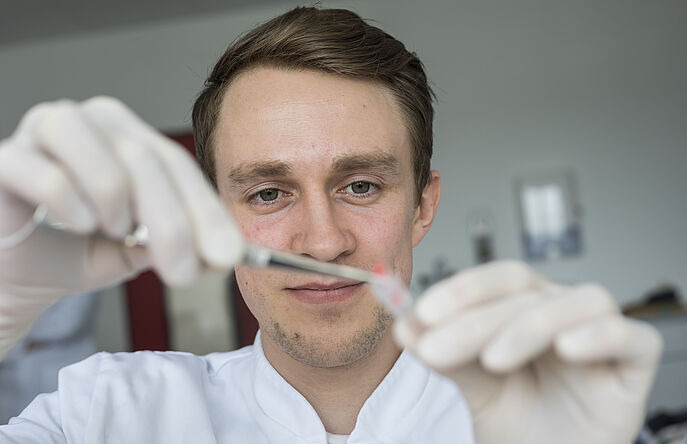BÖNNIGHEIM, Germany (March 2, 2021) – In February, the list of laboratories approved to test for the ISO/IWA 32:2019 protocol was published. Testing provider Hohenstein is one of the 14 labs that are permitted to test for genetic modifications (GMOs) in organic cotton according to the protocols. Hohenstein was one of the first labs accredited when the Global Organic Textile Standard (GOTS) began requiring testing with Version 6.0 in 2020.
The ISO/IWA 32:2019 protocol was developed by the International Organization for Standardization (ISO) as an International Workshop Agreement (IWA) on the initiative of Global Organic Textile Standard (GOTS), Organic Cotton Accelerator (OCA) and Textile Exchange. The aim was to apply an official, standardized GMO testing protocol for textiles from organic cultivation. According to this standard, all organic cotton must be free of genetically modified seeds as well as chemical pesticides and fertilizers.
The complex and extended nature of the textile supply chain conceivably causes some contamination of organic cotton. The problem arises when genetically modified or contaminated cotton is frequently mislabeled as “organic.” With consumers willing to pay more for organic products, tested guarantees have become even more critical.
Going beyond the seed level, the Hohenstein method is a molecular biological detection system for genetically modified cotton at all critical points along the entire value chain - from raw cotton and yarn to fabric and finished end products. The screening thus allows complete traceability through the entire textile chain with clear yes/no statements about GMO-free cotton or textiles.
As a member institute of the OEKO-TEX® Association, Hohenstein also screens textiles for genetically modified organisms as part of the STANDARD 100 by OEKO-TEX® certification. If the requirements are met, the articles can be advertised with claims of "organic cotton", "biological cotton" or "GMO not detectable".
Hohenstein GMO testing is a two-step process:
- The sample is shredded, and the cotton fibers are broken down mechanically and enzymatically. The genetic material (DNA) is isolated from the fiber and purified in a multi-stage process.
- A genetic modification exists if specific target sequences (marker genes) are present in the DNA. Sequence differences are found with molecular-biological detection. Control reactions are used to detect unmodified cotton DNA and to exclude false-negative results.
More information: Hohenstein.US/GMO
###
With more than 40 offices and laboratories worldwide, Hohenstein is an international testing partner in the textile industry. Hohenstein’s research centers around the interaction between textiles, humans and the environment. It is a founding member and leading provider of the OEKO-TEX® portfolio of services such as the STANDARD 100 by OEKO-TEX® certification, the international standard for safe textiles, and is certified by the U.S. Consumer Products Safety Commission as a third-party, independent laboratory for CPSIA compliance verification. Hohenstein.US
Press Images


